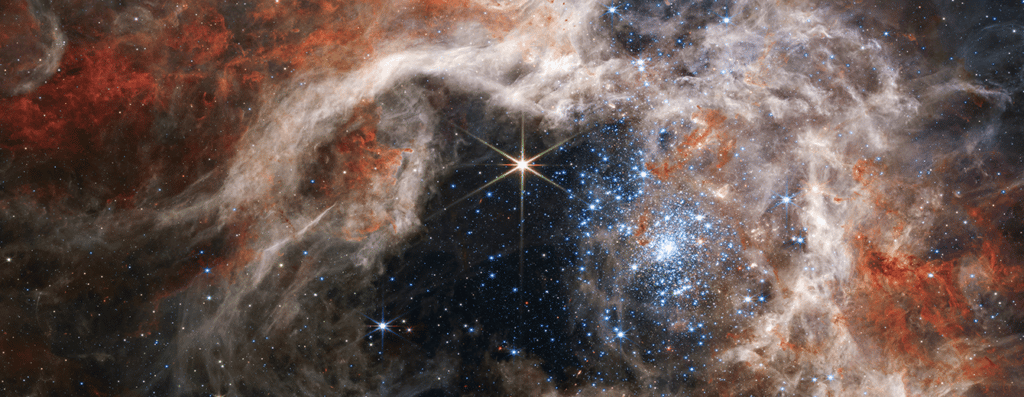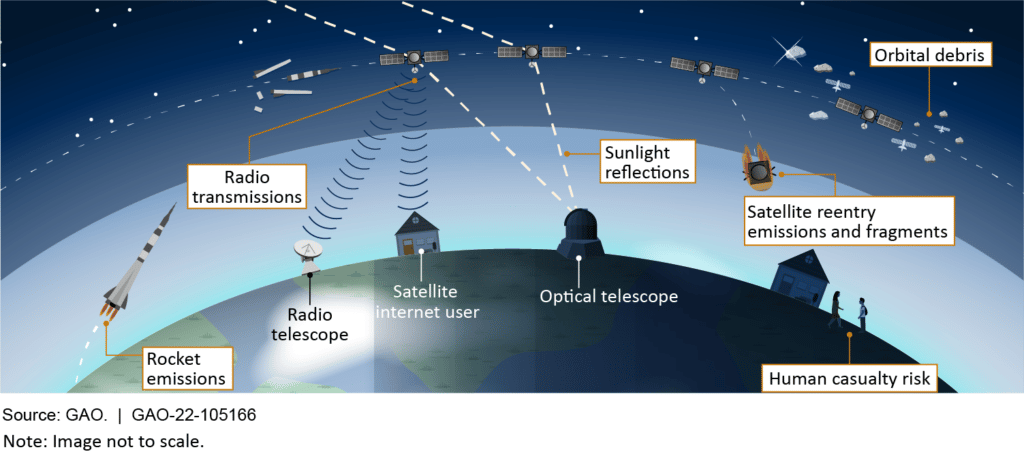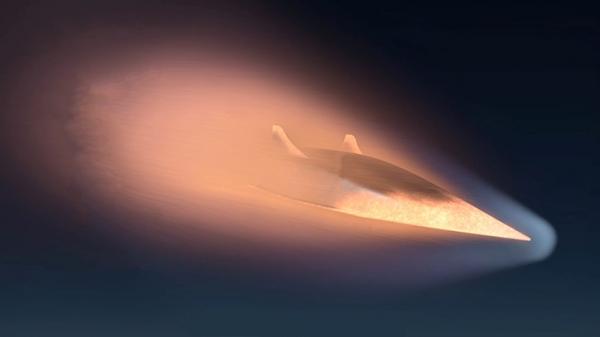This content has been archived. It may no longer be relevant
The big news is already out: space budgets are going up if the administration’s proposal is accepted. NASA’s proposed budget is $26 billion–about an 8 percent increase from its 2022 appropriations. The Space Force’s proposed budget is $24.5 billion–36% increase from 2022 enacted appropriations of $18 billion. While that seems dramatic, it does include transfers from other parts of DOD, including the Space Development Agency.
Here are the programs with the highest proposed budget requests. As more details come in from DOD, we will adjust if necessary.
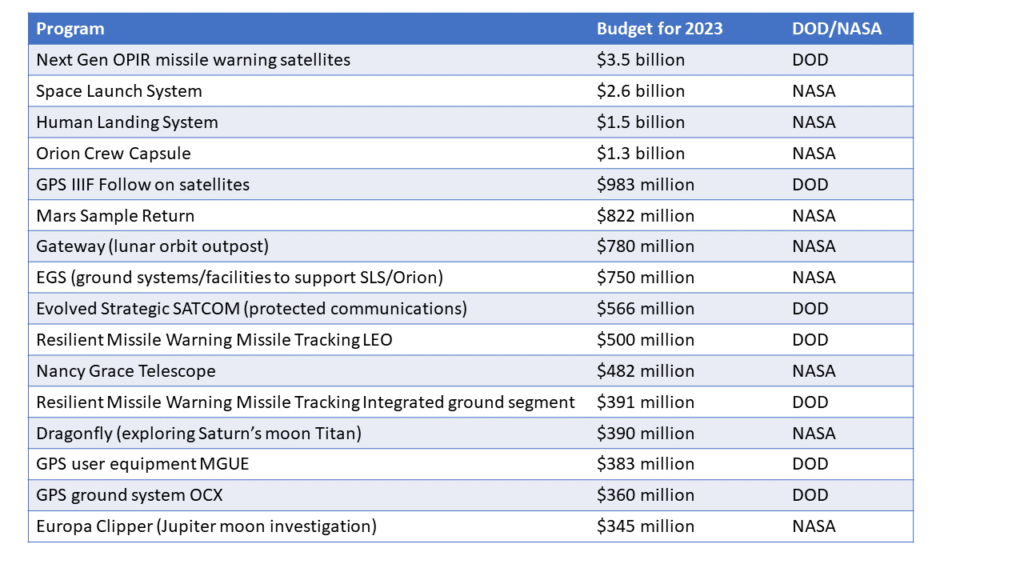
NASA breakdown.
Most of NASA’s proposed increase–nearly $700 million–relates to the Artemis campaign and returning American astronauts to the moon as early as 2025.
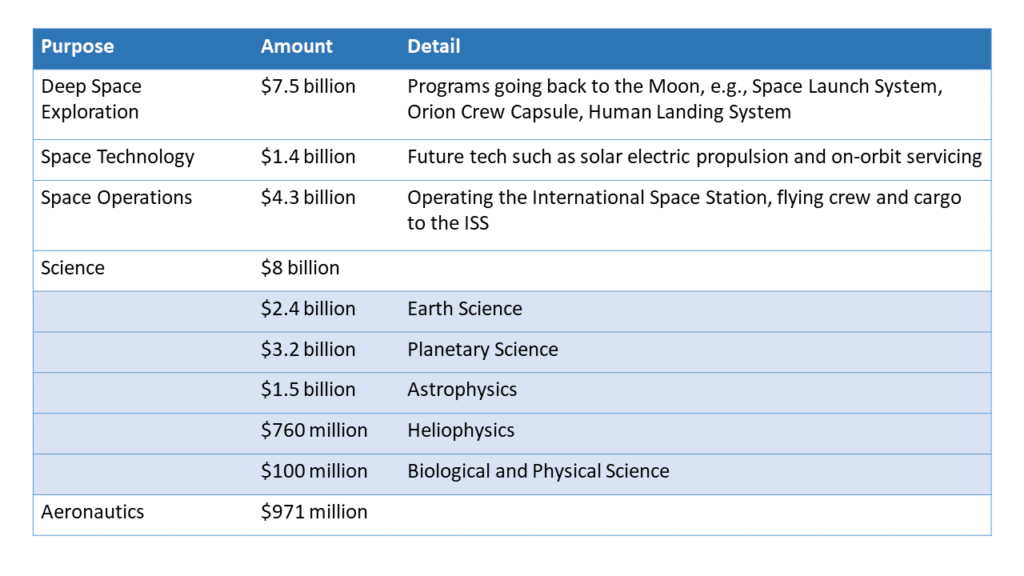
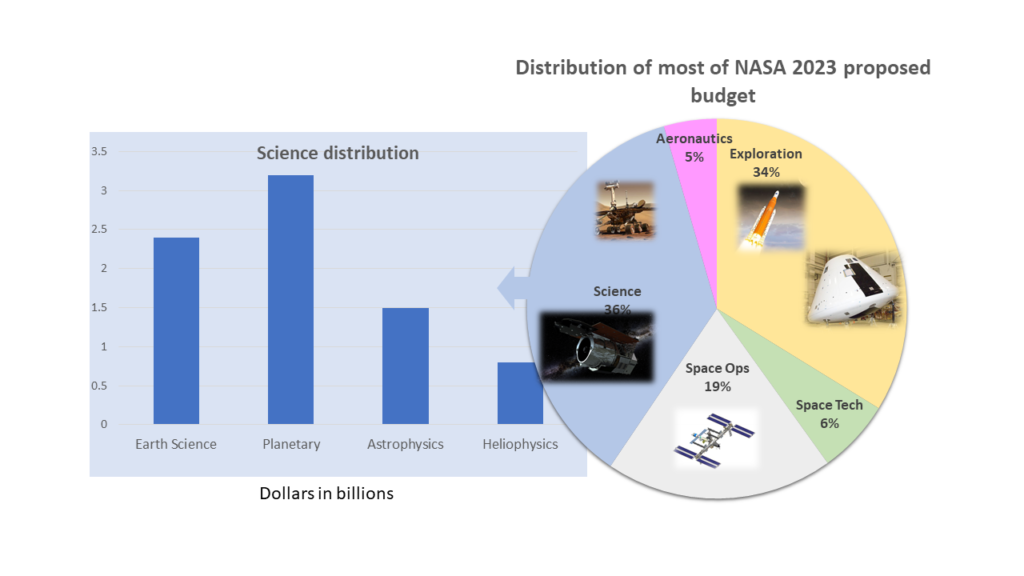
Science programs with highest 2023 budgets.
| Mars Sample Return | $822 million |
| Nancy Grace Telescope | $482 million |
| Dragonfly | $390 million |
| Europa Clipper | $345 million |
| CLIPS | $255 million |
| James Webb (costs mostly for operations in 2023) | $172 million |
| Radioisotope Power | $166 million |
| IMAP (heliophysics probe in operations) | $121 million |
| PACE | $113 million |
| VIPER | $97 million |
| Hubble telescope (operations) | $93 million |
Space Force
Part of the Space Force’s budget increase relates to its absorption of the Space Development Agency budget. SDA is a relatively new agency, which was created to be a disruptor in space acquisition. It is focused on quickly building a resilient space architecture, leveraging advances in the commercial sector. SDA’s 2022 appropriation was a little over $1 billion. While DOD originally proposed $636 million for its 2022 budget, Congress appropriated an additional $550 million to boost the development of satellites that could track both ballistic and hypersonic missiles. Another $1 billion of the Space Force’s budget increase relates to additional investments for its Next Generation Overhead Infrared (OPIR) missile warning system (which the Space Force was already developing). These satellites will be in a higher orbit and focus mainly on detecting missile launches. They will replace the SBIRS high satellite constellation.
As the charts below show, while the space budget is growing, it is just about 8 percent of the overall weapons budget. The charts below from the DOD Comptroller show Space RDT&E and procurement relative to other platforms in DOD and well as the trend upwards for space.


For more on NASA and DOD’s space budgets:
- NASA’s summary request
- NASA’s detailed request
- NASA Asking for Another Steep Increase in FY2023 – SpacePolicyOnline.com
- NASA would get $26 billion in new budget request – The Verge
- FY2023_Weapons.pdf (defense.gov)
- Biden’s 2023 defense budget adds billions for U.S. Space Force – SpaceNews
- Space Force budget gets a big boost to $24.5B in FY23, focus on resilience – Breaking Defense

